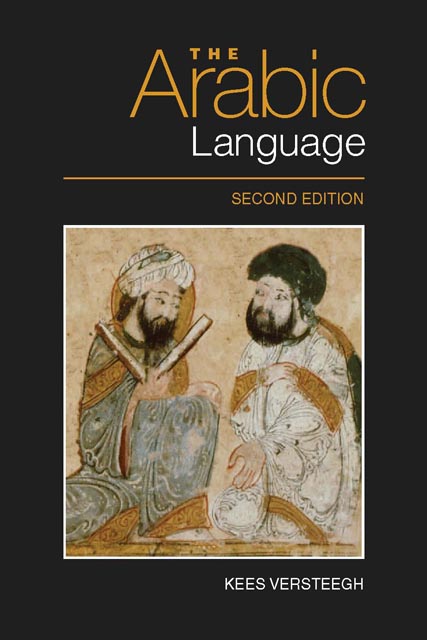Book contents
- Frontmatter
- Contents
- Preface to First Edition
- Preface to Second Edition
- List of Figures and Maps
- List of Tables
- Note on Transcription and Glossing
- 1 The Study of Arabic in the West
- 2 Arabic as a Semitic Language
- 3 The Earliest Stages of Arabic
- 4 Arabic in the Pre-Islamic Period
- 5 The Development of Classical Arabic
- 6 The Structure of Arabic
- 7 The Arabic Linguistic Tradition
- 8 The Emergence of New Arabic
- 9 Middle Arabic
- 10 The Study of the Arabic Dialects
- 11 The Dialects of Arabic
- 12 The Emergence of Modern Standard Arabic
- 13 Diglossia
- 14 Bilingualism
- 15 Arabic as a Minority Language
- 16 Arabic Pidgins and Creoles
- 17 Arabic as a World Language
- Bibliography
- List of Abbreviations
- Index
Preface to First Edition
Published online by Cambridge University Press: 18 November 2022
- Frontmatter
- Contents
- Preface to First Edition
- Preface to Second Edition
- List of Figures and Maps
- List of Tables
- Note on Transcription and Glossing
- 1 The Study of Arabic in the West
- 2 Arabic as a Semitic Language
- 3 The Earliest Stages of Arabic
- 4 Arabic in the Pre-Islamic Period
- 5 The Development of Classical Arabic
- 6 The Structure of Arabic
- 7 The Arabic Linguistic Tradition
- 8 The Emergence of New Arabic
- 9 Middle Arabic
- 10 The Study of the Arabic Dialects
- 11 The Dialects of Arabic
- 12 The Emergence of Modern Standard Arabic
- 13 Diglossia
- 14 Bilingualism
- 15 Arabic as a Minority Language
- 16 Arabic Pidgins and Creoles
- 17 Arabic as a World Language
- Bibliography
- List of Abbreviations
- Index
Summary
A legal scholar once said: ‘Only a prophet isable to have perfect command of the Arabiclanguage.’ This statement is bound to be truesince, as far as we know, no one has ever claimedto have memorised this language in its entirety.(Ibn Fāris, aṣ-Ṣāḥibīfī fiqhal-luġa, ed. Chouémi, Beirut 1964, p.18)
The aim of this book is to give a sketch of the historyof the Arabic language, mother tongue of more than200 million speakers. Since its earliest appearanceas a world language in the seventh century CE,Arabic has been characterised by an oppositionbetween two varieties: a standard language, whichoccupies a prestige position and is revered as thelanguage of religion, culture and education; and avernacular language, which serves as the mothertongue for most speakers and is the natural means ofcommunication throughout society. The oppositionbetween these two varieties constitutes the majortheme of the present book.
The set-up of the book is basically chronological:after an introduction on the study of the Arabiclanguage in Western Europe, Chapter 2 deals with theposition of the Arabic language within the group ofthe Semitic languages, and Chapter 3 with itsemergence in historical times. Then, the linguisticsituation in the Arabian peninsula in the periodimmediately preceding the advent of Islam isdiscussed (Chapter 4).
In the course of the Arab conquests, after the death ofthe Prophet Muḥammad, the Arabic language wasexported together with the religion of the Arabs toa large part of the Mediterranean and Near Easternworld. In the next two chapters, the development ofArabic into a literary standard is analysed. Chapter5 describes the role of Arabic as the language ofliterature and administration. Chapter 6 stepsoutside the chronological framework and discussesthe structure of the Arabic language from anunexpected perspective, that of the Arabgrammarians, who analysed their own language in away that differed in many respects from the Westernmodel.
The contact between the speakers of Arabic and theinhabitants of the conquered territories broughtabout a restructuring of the language, which led toan opposition between standard language andvernacular dialect. Chapter 7 attempts to explainthe emergence of vernacular varieties of the Arabiclanguage. In Chapter 8, the influence of thevernacular language in the so-called Middle Arabictexts is analysed.
- Type
- Chapter
- Information
- The Arabic Language , pp. vii - viiiPublisher: Edinburgh University PressPrint publication year: 2014



